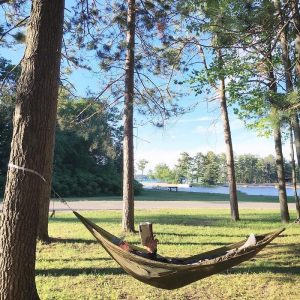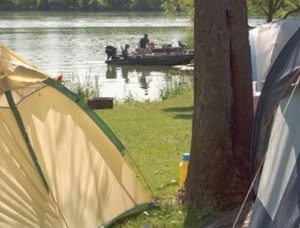CLICK HERE for the latest market quotes from the Iowa Agribusiness Network!
CLICK HERE for the latest market quotes from the Brownfield Ag News Network!
CLICK HERE for the latest market quotes from the Iowa Agribusiness Network!
CLICK HERE for the latest market quotes from the Brownfield Ag News Network!
(Radio Iowa) – A plan emerging from the Iowa House would provide 750-thousand dollars in grants to help small meat lockers with fewer than 50 employees expand. In addition to the money, a bill that’s passed the House would set up a task force to study creation of an artisanal butchery program at a community college or Iowa State University. Representative Phil Thompson of Jefferson says the pandemic highlighted the need for small-scale, local meat processing.
“Many of us remember walking into our grocery stores, only to find empty meat cases,” Thompson says. “…We saw outbreaks and closures of some of our larger meatpacking plants and a supply chain that struggled to keep up with demand.” The proposed state grants could be used to buy more space or equipment, like refrigerators and freezers, for meat lockers. The money is included in a separate bill for the Iowa Economic Development Authority — the state agency that would hand out the grants.
Representative Chris Hall of Sioux City says there’s a definite need, since many Iowa meat lockers aren’t taking orders until 2022 or 2023. “Past that, I think that it speaks to a greater interest in our state and many other places the where people are looking to find a connection to local agriculture,” Hall says, “and to know where their food comes from.” Representative Chad Ingels, a farmer from Randalia, is the bill’s sponsor.
“It came from a lot of discussions with farmers that wanted more opportunities to sell directly to consumers and consumers that wanted more opportunities to buy directly from farmers,” Ingels says. “These conversations were happening before 2020. Last year just kind of brought it all to a head.”
Nebraska’s legislature is considering a different route to expanding consumer access to local protein. Nebraska’s bill would let consumers buy shares in live animals, the livestock would be slaughtered and processed by a custom butcher and the meat would not be subject to federal inspection.
(Radio Iowa) – Iowa Senator Joni Ernst is co-sponsoring legislation designed to foster more disclosure of the prices paid for cattle, as well as a bill to block federal agencies from promoting a “meatless” diet among employees. Ernst, a Republican who grew up on a farm near Red Oak, says these issues are important to her since her family raised hogs. “Here in Iowa, folks, we are all about the meat,” Ernst says. “Farming and ranching is not only critical to our jobs, our economy, our culture and our way of life here in Iowa, it’s also in our DNA.”
Ernst is co-sponsoring a bill that would give independent cattle producers more data about what meatpackers are paying for cattle. Since packers often buy directly from feedlots, cattle prices aren’t well represented in public sales. The bill would set up a system already used to help track hog prices. Ernst warns getting the bill through the Senate will be difficult. “What we’ll see is a little bit of pushback coming from different areas of the United States,” she says. “…You see those beef producers maybe in Texas or Oklahoma that have a different thought on how it should be handled.”
Ernst and a Kansas senator are co-sponsoring a bill that would ban federal agencies from excluding meat from the menu in government cafeterias and dining halls. “When I hear calls from the liberal left, everyone from out-of-touch politicians to Hollywood elite encouraging people to ban meat and the quality agriculture products we produce here in Iowa it makes me sizzle,” Ernst says.
Ernst is calling this bill the TASTEE Act, which stands for Telling Agencies to Stop Tweaking What Employees Eat Act. Ernst says it’s one way supporters of animal agriculture can start pushing back against the so-called Green New Deal and prevent another episode like the U-S-D-A newsletter reference to “meatless Mondays” that was retracted in 2012.
Atlantic Trees Forever has announced spring tree vouchers are now available. Spokesperson Dolly Bergmann said tree vouchers are a great way to help with the cost of a tree to plant. The vouchers are worth $30 off the cost of a tree, and can be obtained at Pymosa Farms, north of Atlantic. Bergmann adds, there are a limited number of vouchers available. Those at Pymosa Farms can help you determine what kind of tree would work best in the location you would like to plant a tree.
 Pymosa Farms is located at 50979 Buck Creek Road, Atlantic, but Bergmann suggests calling owner Tim Reavis, at 402-659-1213 before driving out to the farm to ensure someone is available to help you.
Pymosa Farms is located at 50979 Buck Creek Road, Atlantic, but Bergmann suggests calling owner Tim Reavis, at 402-659-1213 before driving out to the farm to ensure someone is available to help you.
DES MOINES, Iowa (April 12, 2021) – Iowa Secretary of Agriculture Mike Naig today (Monday) commented on the Iowa Crop Progress and Conditions report released by the USDA National Agricultural Statistics Service. The report is released weekly from April through November. “With spring weather now upon us, farmers across Iowa are looking to get planters into the field,” said Secretary Naig. “Rainfall over the last week has been beneficial for the drier parts of the state, though farmers should keep an eye on the forecast, as freezing temperatures are possible over the next few days.”
The weekly report is also available on the USDA’s website at nass.usda.gov.
Crop Report:
Measurable rainfall fell across the State which allowed Iowa farmers only 3.1 days suitable for fieldwork during the week ending April 11, 2021, according to the USDA, National Agricultural Statistics Service. Fieldwork activities included applying anhydrous and fertilizer, spreading manure, spring tillage and planting oats. There were also scattered reports of corn being planted.
Topsoil moisture levels rated 4% very short, 17% short, 69% adequate and 10% surplus. Subsoil moisture levels rated 12% very short, 28% short, 56% adequate and 4% surplus. Thirty-seven percent of the expected oat crop has been planted, 4 days ahead of last year and 5 days ahead of the 5-year average. Statewide, 3% of the oat crop has emerged.
Pasture condition rated 3% very poor, 11% poor, 42% fair, 40% good and 4% excellent. Pastures are greening up and starting to grow. Muddy feedlots were reported in the southern part of the state. The statewide weekly average precipitation was 1.45 inches while the normal is 0.64 inch.
Multiple western Iowa stations reported the week’s high temperature of 86 degrees on the 4th and 5th; on average 29 degrees above normal. Several northwestern Iowa stations reported the week’s low temperature of 28 degrees on the 11th, on average six degrees below normal. Four-inch soil temperatures were in the upper 40s east to low 50s west as of Sunday.
(Radio Iowa) – The Iowa Natural Resources Commission is amending its rules to allow hammocks to be used in state parks and camping areas. State Parks Bureau Chief, Todd Coffelt, says some people use hammocks for sleeping instead of a tent or camper. “You still have to rent a site — but if there are trees mature enough that can be used for banding your hammock to it — then we want to provide that. It’s just that there’s care in doing that, getting it tied up there so that the tree isn’t harmed,” Coffelt says.
 The proposed rules lay out how the hammocks are held up with straps and bands. You can hammer nails or screws into trees to hold up your hammock. He says the use of hammocks depends on where you are. “Not every park has the right height of tree to hold up a person like me, that I would be comfortable sleeping in,” he says. “But it is different for everybody.” Coffelt says they also want to avoid having too many hammocks in one tree. “If you can find two trees that are the right distance apart — you’re going to put a hammock up. Then you are going to start what I call the ladder effect where you have a hammock above a hammock, above a hammock. And we have to address that, because part of what we do is protecting the resource,” according to Coffelt.
The proposed rules lay out how the hammocks are held up with straps and bands. You can hammer nails or screws into trees to hold up your hammock. He says the use of hammocks depends on where you are. “Not every park has the right height of tree to hold up a person like me, that I would be comfortable sleeping in,” he says. “But it is different for everybody.” Coffelt says they also want to avoid having too many hammocks in one tree. “If you can find two trees that are the right distance apart — you’re going to put a hammock up. Then you are going to start what I call the ladder effect where you have a hammock above a hammock, above a hammock. And we have to address that, because part of what we do is protecting the resource,” according to Coffelt.
He says they are going to allow only two hammocks, or camping units together. “You can’t stack them six high. Nature just isn’t built for everything we want it to do sometimes. We want to work with people and accommodate that as much as we can,” Coffelt says.
Any interested person may submit comments concerning this proposed rulemaking. The D-N-R is taking comments on the proposed rule change. You should send comments no later than 4:30 p-m on June 2nd. Comments should be directed to: Sherry.Arntzen@dnr.iowa.gov. There will be a conference call public hearing at 10 a-m June 2nd.
(Radio Iowa) – Iowa’s temperatures this spring are rollercoastering, warming into the 80s one day and spiraling into the 30s the next, making it a challenge for farmers to launch into their spring planting. Iowa State University Extension field agronomist Meaghan Anderson says the optimum planting window for Iowa corn has been April 11th to May 18th, but growers need to pay attention to the weather before — and after — planting.
“The date on the calendar, at least in Iowa, is not right quite yet,” Anderson says. “To totally eliminate any risk as far as maybe a frost issue, or just cool temperature effects on our crops after they’ve been put in the ground, so there’s always that risk.” Although having a soil temperature of at least 50 degrees at planting is important, Anderson says that soil temp should remain at 50 degrees or higher — after — planting to prevent injury to the seed.
“We want the soil temps to be about 50 degrees and then we want to make sure the forecast would allow it to be trending warmer after we’re planting,” Anderson says. “That allows some stability in temperature to make sure the crop’s not going to be exposed to any especially cold temperatures.” For those who decide to plant early, she says to keep in mind that crop insurance will not cover a replant until April 11th.
“If a farmer would be relying on the crop insurance to help us replant crops,” she says, “they’ll want to make sure they’re waiting until that replant has kicked in with the crop insurance before they’re planting the first time.” Early planting for soybeans is anytime between April 11th and April 25th. Anderson says growers wanting soil temperature information can access the Iowa Environmental Mesonet at: https://mesonet.agron.iastate.edu/
Cass County Naturalist Lora Kanning says “We have one of best views in Southwest Iowa to observe spring woodland wildflowers right here outside Atlantic,” and “The Cass County Conservation Board is holding a Wildflower Walk” to take in their beauty. The program will be held at the Pellett Memorial Woods north of Atlantic off Olive Street, beginning at 9-a.m. on April 24th. There is no charge to participate
 Oak Strollers Nature Club for Families are welcome to join-in at this event. Kanning says “We invite you to walk through the early spring wildflowers with our naturalist. Learn the names, uses and history of these Wildflowers.”
Oak Strollers Nature Club for Families are welcome to join-in at this event. Kanning says “We invite you to walk through the early spring wildflowers with our naturalist. Learn the names, uses and history of these Wildflowers.”
Those in attendance will meet at Pellett Memorial Woods- located ½ mile north and ¾ mile east of the KJAN radio station.
(Radio Iowa) – The Iowa Department of Natural Resources is rolling out a new pricing system for the state parks and campgrounds. Parks Bureau Chief Todd Coffelt says it’s in response to a law passed by the Iowa Legislature giving the DNR the authority to set the pricing. “The law didn’t say raise all the prices. The law said we’ll give you the tools to make the decision that is necessary,” Coffelt says. “So on an annual basis we will be comparing these and we’ll be coming back with plans every year as we report to the legislature. We are going to see how the response is.”
Coffelt says they have to look at similar attractions within 60 miles of the state facilities and see if their prices are comparable. He says they sorted everything into four tiers — with tier one being the facilities that see the fewest visitors each year. “The first tier where the use is down we actually lessen the price to get people to go there, to make it more attractive,” he says. Tier four facilities have the most use and often the most amenities, and Coffelt says they will likely see an increase. “So when you add in the amenities of your own pedestal for electricity, your own hydrant for water, and your own connection for greywater, that’s where you are going to see the price increase in those more popular areas,” Coffelt says.
 State parks were shut down for a time by the pandemic — and once back open — 2020 set a record of more than 16 million visitors. Coffelt says people were looking to get out of the house in the pandemic and that seems to be continuing. “Our March numbers for this year, relatively speaking, they are double what they were last year,” Coffelt says. “So people are getting out, we’ve had nice weather, The public has the equipment, and they’ve seen the value of being able to get outside and spend time with family We are going to be busy. And we are excited by it.”
State parks were shut down for a time by the pandemic — and once back open — 2020 set a record of more than 16 million visitors. Coffelt says people were looking to get out of the house in the pandemic and that seems to be continuing. “Our March numbers for this year, relatively speaking, they are double what they were last year,” Coffelt says. “So people are getting out, we’ve had nice weather, The public has the equipment, and they’ve seen the value of being able to get outside and spend time with family We are going to be busy. And we are excited by it.”
Coffelt thinks people will understand if the cost to go to their favorite park or campground increases, as that money is going back into the facilities. “We haven’t raised them for 21 years. This is going to allow us to do things to care for the resource that we haven’t been able to do because they weren’t a high enough priority,” he says. “And we are really going to take a look at how the public is using them. Options could be more staff, options could be improvements. We’ll have to take a look at that. We are just getting started.”
Coffelt says one good thing that came out of the pandemic is people became more aware of the parks last year. “It was our hundredth anniversary last year, and so we had the greatest plan ever to get people to come to the parks moving up into it,” Coffelt says. “Then all of a sudden the pandemic happened and we put the plan on the shelf and more people came to the parks than we could ever have anticipated. On one hand, it happened, on the other hand, it didn’t happen the way we thought it would.”
Coffelt says the cost changes for each facility are listed on the iowadnr.gov website. Click on the “Places to Go” tab.
(Radio Iowa) – Iowa State University Extension is beginning a three-year project to study the challenges and opportunities for women landowners. Madeline Schultz is leading the study she says will look at several things facing women. “What some of the barriers are to making good decisions for greater economic profitability as well as conservation decisions, as well as land succession or generational transition decisions,” Schultz says.
Schultz is the program manager for the farm management team’s women in ag program. An I-S-U survey found 47 percent of all acres and 55 percent of all leased acres in Iowa were owned by women. She says there has already been some good research on the issues — including a 2014 U-S-D-A study. “And in that particular study, it revealed that decisions on land owned by women landowners are more likely to be made by the tenants,” she says. Schultz says they want to dig deeper into some of the previous findings. “We’re hoping to build on that and find out how we can support women in making decisions for their land,” Schultz says.
She says another I-S-U survey found that 76 percent of the women landowners are 65 or older. “So what this means for us is that women’s succession decisions are of considerable importance really to the whole farming community — and to the future of our agricultural system,” according to Schultz. She says the survey is the start of their work. Schultz says the next step is to engage women in focus groups and advisory committees to talk with them in small groups — and then they can do some pilot programming to provide them some education.
A survey will be sent to known women landowners in June, and those interested in participating can contact Madeline Schultz at 515-294-0588 or schultz@iastate.edu. The U-S-D-A has provided 300-thousand dollars for the study.
(Radio Iowa) – Leaders of one of Iowa’s largest commodities groups are optimistic their main priority bill before the state legislature will pass and be sent on to the governor after clearing a recent “funnel” deadline. Mindy Larsen Poldberg, government relations director of the Iowa Corn Growers Association, says the biofuels bill promises a big boost for ethanol and biodiesel producers and retailers. “It will reduce the amount of E-0 sales that will be sold in the state of Iowa, replacing that with E-10,” Poldberg says. “It will increase the amount substantially for money that’s put into infrastructure for E-15 to E-85 and also biodiesel.”
 She says an important component of the bill would offer grants to retailers to upgrade their pumps, though it wouldn’t go into effect for several years. “As we move toward that 2028 deadline, that’s why we want to put a significant amount of resources into the infrastructure program,” Poldberg says, “so that retailers can get those grants, up to 70% of a grant, in order to make those higher blends of ethanol and biodiesel available.”
She says an important component of the bill would offer grants to retailers to upgrade their pumps, though it wouldn’t go into effect for several years. “As we move toward that 2028 deadline, that’s why we want to put a significant amount of resources into the infrastructure program,” Poldberg says, “so that retailers can get those grants, up to 70% of a grant, in order to make those higher blends of ethanol and biodiesel available.”
She says the measure has passed the Iowa House Ways and Means Committee, and the full House is its next stop.